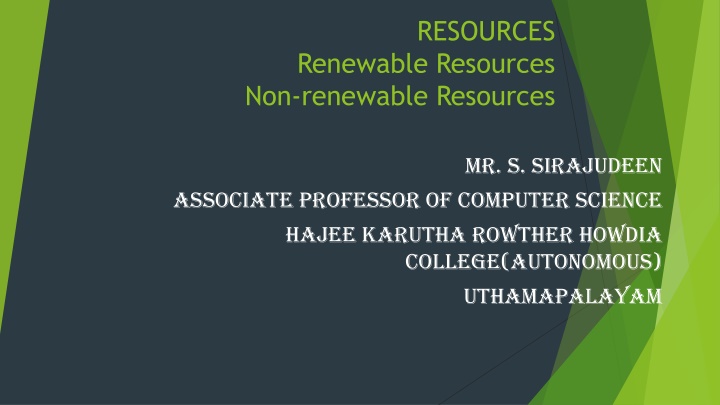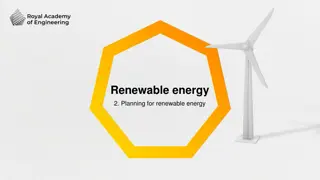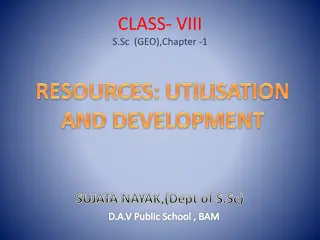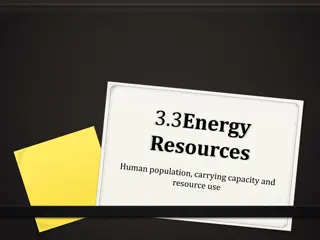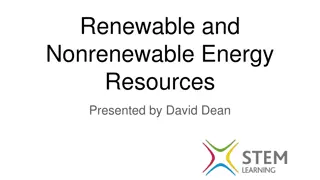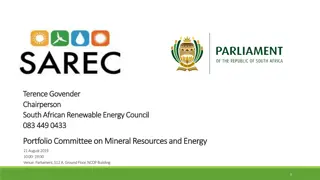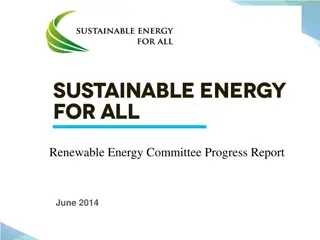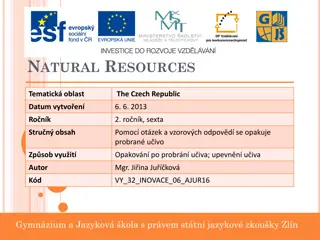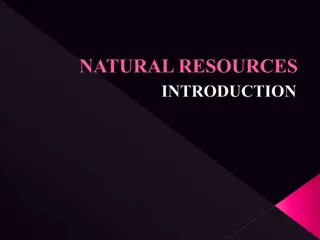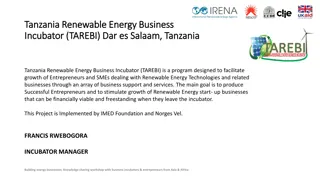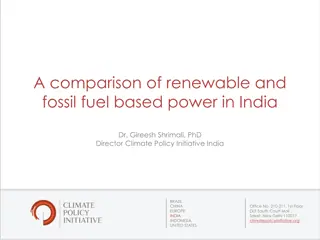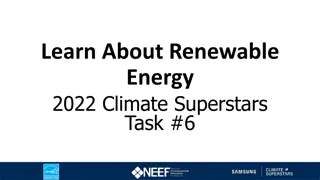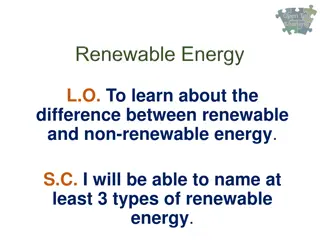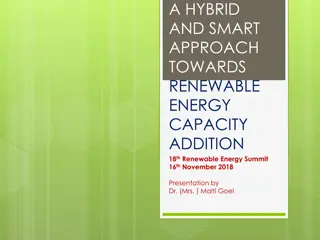Types of Resources: Renewable vs. Non-Renewable
Natural resources are divided into two main categories: Renewable resources are replenishable, such as solar energy and wind energy, while non-renewable resources, like coal and petroleum, are finite and cannot be replaced. Discover the importance and benefits of renewable resources in our environment.
Download Presentation

Please find below an Image/Link to download the presentation.
The content on the website is provided AS IS for your information and personal use only. It may not be sold, licensed, or shared on other websites without obtaining consent from the author.If you encounter any issues during the download, it is possible that the publisher has removed the file from their server.
You are allowed to download the files provided on this website for personal or commercial use, subject to the condition that they are used lawfully. All files are the property of their respective owners.
The content on the website is provided AS IS for your information and personal use only. It may not be sold, licensed, or shared on other websites without obtaining consent from the author.
E N D
Presentation Transcript
RESOURCES Renewable Resources Non-renewable Resources Mr. S. Sirajudeen Associate Professor of Computer Science Hajee Karutha Rowther Howdia College(Autonomous) Uthamapalayam
Mr. S. Sirajudeen Associate Professor of Computer Science Hajee Karutha Rowther Howdia College(Autonomous) Uthamapalayam
Resources Natural resources are the wealth of the earth they are the materials available in nature and useful to human begins, animals and plants Example: Water, air, land, plants, animals, coal, petroleum, minerals, forest, wood, etc. Type of Resources: There are two types of resources namely Renewable Resources Non-Renewable Resources
Renewable Resources The Renewable resources can be replaced after their use . These are available continuously. Example: Solar energy, Wind Energy, Water, Aqua food, Forest, Grassland, Animals, etc.
Solar Energy Sunlight is the solar energy. It forms the major energy source for the plants. Planets synthesize starch with the help of sunlight. All animals in the world depend on the energy stored by the plants. The Solar energy is also used for solar cooker, solar light, solar calculator, etc. The solar energy consists of tremendous electric energy. Technologies must be developed to exploit the sunlight. Solar cells generate electricity using sunlight. They are pollution free.
Wind Energy Wind energy is also the renewable energy resources It is available day and night. It is used to generate electric current. In TamilNadu, Muppandal has the highest concentration in mills to produce electricity.
Hydroelectric Energy Hydroelectric power is generated by the flow of water on a turbine. The water stored in dams is used to rotate the turbines of the power generators.
Non-Renewable Resources The non-renewable resources cannot be replaced after their use. They remain on earth in a different form and unless recycled become waste material. Example: Coal, Petroleum, Iron, Natural gas, etc.
Coal Coal is a fossil fuel. It is a non-renewable natural resource. It is found under the Earth. It is an organic compound. It is a black product formed by organic decomposition of plant materials millions of years ago. Coal is found in stratified beds. The coal is of four types, namely Anthracite Bituminous coal Sub-bituminous coal Lignite
Anthracite: Anthracite is the hard coal. It has the lowest moisture content. Highest carbon content and highest heat value. Bituminous: Bituminous coal is the most abundant one. i. ii. iii. Sub Bituminous: iv. Lignite: Lignite is the brown coal. It has 50% of water content. Low carbon content and low heat value.
Underground Mining Coal is collected by underground mining methods. About 6,000 billion tons of coal lie under the earth. By now about 200 billion tons have been used.
Coal is a primary source of industrial energy. The coal used by thermal power plants. Iron and steel industries, Bricks and kiln factories, railways, cement factories, fertilizer industries, etc. Neyveli has a deposit of about 3,300 million tons of coal. The coal available in neyveli is lignite. It is about 90% of countries have lignite reserves. The states having major coal reserves are Bihar, Orissa, West Bengal, Madhya Pradesh, Andhra Pradesh and Maharashtra.
Oil Oil is a non-renewable resource Oil is the most abundant fluid in the Earth s crust, next to water. It is a hydrocarbon. It is the mineral oil. It is a fossil fuel. The crude oil is petroleum. It is formed by the decomposition of buried plants, millions of years ago. Crude oil is refined to produce petrol, diesel, kerosene, propane, gasoline, jet fuel, heating oil, motor oil, paraffin wax, petroleum jelly, etc. The chemicals present in oil are isolated and used for the production of plastics, medicines, etc. The oils are rich in the following regions of the World USA, Mexico, Russia, Iran, Iraq, Saudi Arabia, Kuwait, etc. In India oil is available in Gujarat, Assam, Thar Desert, Andaman and Nicobar Island, Bombay, etc.
Nuclear energy Nuclear energy is the non-renewable energy resource. It is obtained from the fission of atoms of radioactive elements. Radioactive elements are used in atomic power stations are located in Tarapur (Mumbai), Kota (Rajasthan) and Kudankulam (TamilNadu).
